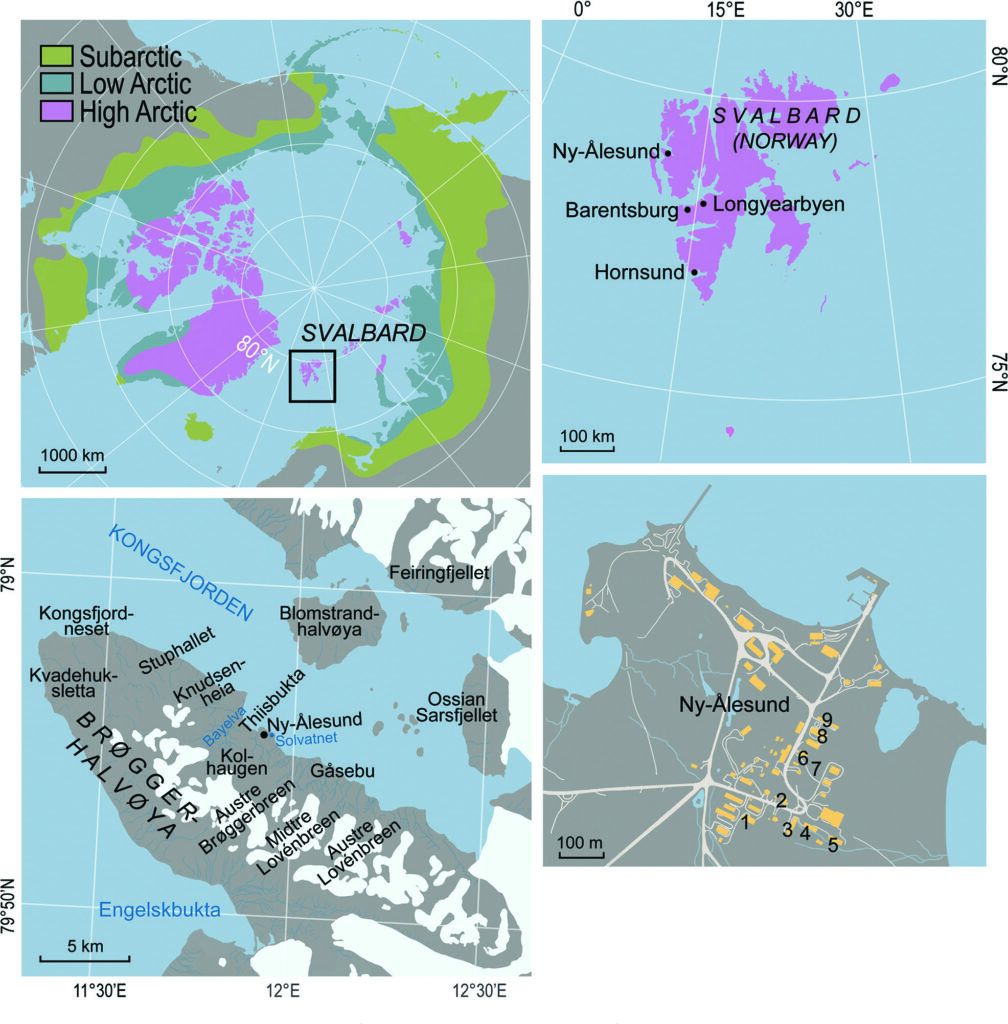New review article about terresterial and freshwater research in Ny-Ålesund!
April 2022 – Åshild Ø. Pedersen et al., published a review article in the journal Polar Research: Five decades of terresterial and freshwater research at Ny-Ålesund, Svalbard.
Terrestrial, freshwater, glacial and marine ecosystems are accessible year-round from Ny-Ålesund, providing unique opportunities for interdisciplinary observational and experimental studies along physical, chemical, hydrological and climatic gradients.

In this review article the authors have synthesized terrestrial and freshwater research from five decades atNy-Ålesund and reviewed current knowledge of biodiversity patterns, species population dynamics and interactions, ecosystem processes, biogeochemical cycles and anthropogenic impacts.
The authors establish that there is now strong evidence of past and ongoing biotic changes caused by climate change, including negative effects on populations of many taxa and impacts of rain-on-snow events across multiple trophic levels. While species-level characteristics and responses are well understood for macro-organisms, major knowledge gaps exist for microbes, invertebrates and ecosystem-level processes.
To fill current knowledge gaps the authors presents four recomendations:
1 – Maintaining monitoring efforts, while establishing a long-term ecosystem-based monitoring programme
2 – Gaining a mechanistic understanding of environmental change impacts on processes and linkages in food webs
3 – Identifying trophic interactions and cascades across ecosystems
4 – Integrating long-term data on microbial, invertebrate and freshwater communities, along with measurements of carbon and nutrient fluxes among soils, atmosphere, freshwaters and the marine environment
The synthesis that is done shows that the Ny-Ålesund study system has the characteristics needed to fill these gaps in knowledge, thereby enhancing our understanding of High-Arctic ecosystems and their responses to environmental variability and change.
To read the full article, use this link: https://polarresearch.net/index.php/polar/article/view/6310/14518
Did you find what you were looking for?